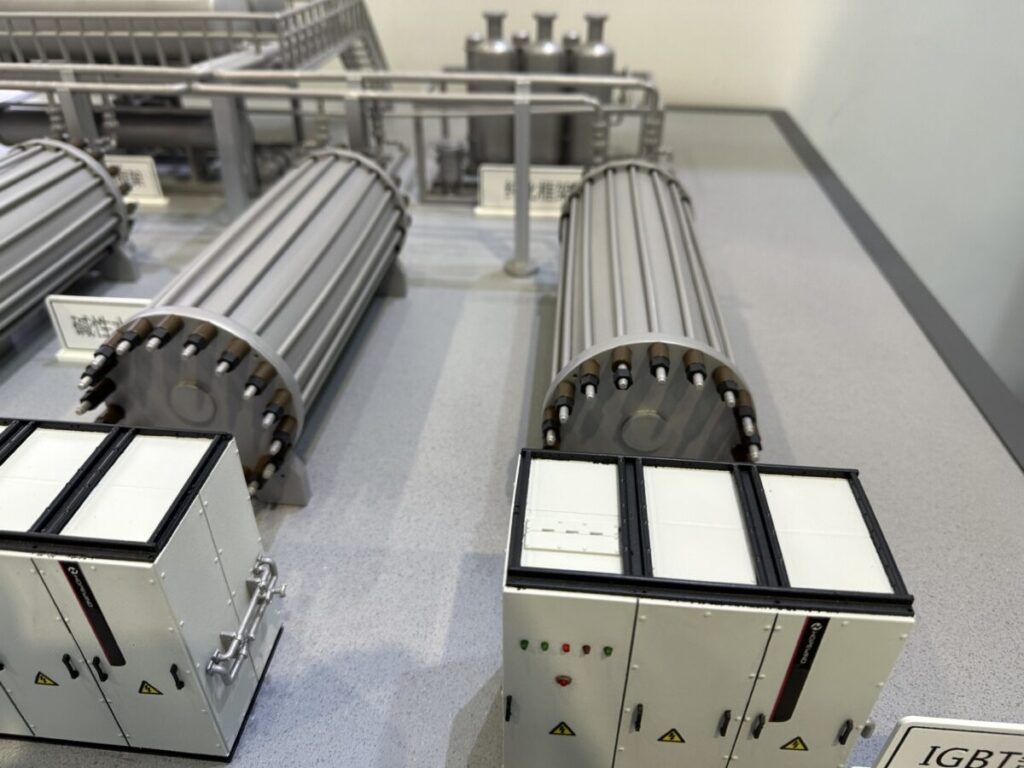Researchers in Italy outlined a new model for estimating hydrogen production costs as a function of plant component sizes. They tested PV, wind and hybrid hydrogen production to determine the optimal size ratio for the period 2030-2050. They also found that solar hydrogen can currently reach a levelized hydrogen price of €5.11/kg in Italy, with a PV ratio of 2.2.
Researchers from the Italian Ministry of Environment and Energy Safety and the Polytechnic University of Turin have developed a new model to estimate hydrogen production costs as a function of plant component sizes.
“The goal is to go beyond the analysis of a specific case study and provide broadly applicable considerations for the optimal design of green hydrogen production systems,” the researchers said, noting that the research was conducted for four production scenarios – PV energy only , wind energy only, solar-wind hybrid production and battery storage hybrid production. “A sensitivity analysis of the investment costs for the energy-to-hydrogen technologies is also being conducted to explore different technology learning pathways from today to 2050.”
The simulation is based on capacity factors from 2016 in Italy, which was identified as the most typical reference weather year for the country. The proposed scenario assumed a capex of €650/kW for PV, €1,120/kW for wind energy, €306/kWh for battery storage and €1,188/kW for the electrolyzers.
“The sensitivity analysis includes size ratios from 0.5 to 8 and battery autonomy values from 0 to 6 hours, ensuring the identification of the point of minimum levelized cost of hydrogen (LCOH),” they explained. “Through this analysis, the trends of the energy and economic indicators as a function of the design ratios are achieved and the cost-optimal design point (minimum LCOH) is determined.”
From their analysis, the scientists concluded that the LCOH for the PV-only configuration is €5.11/kg and is achieved with a PV ratio of 2.2. This means that the PV power must be 2.2 times greater than the power calculated by an electrolyser. For the wind-only scenario, the LCOH was estimated at €5.76/kg, with a ratio of 2.8.
“The optimal hybrid solution is characterized by a lower LCOH value (€5.04/kg) compared to the PV and WT only configurations, and the optimal size ratio is 1.6 for both PV and WT,” they further explained . “The introduction of battery storage does not appear to be useful from an economic point of view, in terms of LCOH.”
In a next step, the researchers repeated the simulation with assumed capex for the 2030 and 2050 scenarios. In their 2030 scenario, the capex was €450/kW for PV, €1,040/kW for wind energy, €175/kWh for battery storage and € 701/kW for electrolyzers. The investments in 2050 amounted to €350/kW, €960/kW, €131/kWh and €314/kW respectively.
“The optimal PV ratio drops from 2.2 in the current scenario to 2.1 in 2030 and 1.9 in 2050,” the results showed. “The costs of hydrogen production are also decreasing from the current to the future scenario. In concrete terms, the LCOH, which at current technology costs is €5.11/kg, will fall to €3.28/kg in 2030 and €2.04/kg in 2050.”
Popular content
For the future wind scenarios, the ratio drops to approximately 2.4 in 2030 and 1.9 in 2050, with prices falling to €4.69/kg and €3.71/kg respectively. For the hybrid case, the wind ratio drops to zero in the 2030 and 2050 scenarios, while the PV ratio increases to 2.1 in 2030 and decreases to 1.9 in 2050 to compensate for the absence of wind energy. The LCOH drops to €3.28/kg in 2030 and €2.04/kg in 2050.
“It is essential to provide guidance to industrial users and stakeholders on the appropriate sizing of new electricity-to-hydrogen plants,” the academics concluded. “Given the high costs of the technologies involved, the design should aim for a cost-optimal layout to minimize hydrogen production costs and increase the competitiveness of low-carbon hydrogen in the market.”
Their findings were presented in “Design of hydrogen production systems powered by solar and wind energy: understanding the optimal size ratios,” published on Energy conversion and management.
This content is copyrighted and may not be reused. If you would like to collaborate with us and reuse some of our content, please contact: editors@pv-magazine.com.

